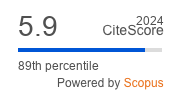Article | Open Access
| Ahead of Print | Last Modified: 30 October 2025
Remapping the Legacy of Enslavement: Street Names, Stealth Stickers, and the Living Black Atlas
| Views: | 577 | | | Downloads: | 352 |
Abstract: This article interprets the Stealth Slavery Sticker Campaign, a grassroots counter-mapping project led by the artist-activist collective Slavers of New York, as a chapter in the broader Living Black Atlas. Started during the racial reckoning of 2020, the campaign placed unauthorized stickers on street signs and other surfaces across Brooklyn to reveal suppressed histories of slavery embedded in commemorative place names. The stickers transformed daily encounters with taken-for-granted road names into unexpected opportunities to confront prominent historical families who profited from enslavement and to acknowledge the contributions of enslaved Africans in shaping the city. The collective framed their campaign as a “guerrilla educational” action that disrupted memorial landscapes, challenged discourses of white innocence, and provoked broader conversations about racial justice and accountability. At a time when official institutions are increasingly retreating from confronting racism, small, temporary interventions, such as these Stealth Stickers, can play a crucial role in encouraging critical audits of commemorative infrastructures, layering counter-narratives onto public spaces, fostering embodied confrontation with historical truths, and remaking everyday places through bold, unexpected acts of resistance.
Keywords: Black counter-mapping; commemorative justice; memory-work; Slavers of New York; white innocence
Published:
Ahead of Print
Issue:
Vol 14 (2026): Counter Data Mapping as Communicative Practices of Resistance (In Progress)
© Derek H. Alderman, Joshua Inwood. This is an open access article distributed under the terms of the Creative Commons Attribution 4.0 license (http://creativecommons.org/licenses/by/4.0), which permits any use, distribution, and reproduction of the work without further permission provided the original author(s) and source are credited.


